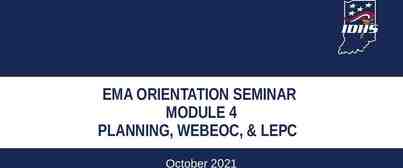Continuous Quality Improvement Toolkit A Resource for
28 Slides2.85 MB
Continuous Quality Improvement Toolkit A Resource for Maternal, Infant, and Early Childhood Home Visiting Program Awardees Module 1: Introduction to CQI This document was prepared for the U.S. Department of Health and Human Services (HHS), HRSA, and ACF by James Bell Associates, Inc., under ACF contract number HHSP233201500133I. For more information, see http://www.jbassoc.com/reports-publications/dohve.
CQI Training Overview 1 2 3 4 5 6 7 8 9 Introduction to CQI Using Data to Drive CQI and Identify Topics Creating the CQI Culture and Forming a Team Creating SMART Aims Understanding the PDSA Process & Measurement CQI Tools I: Process Maps CQI Tools II: Root Cause Analysis Tools CQI Tools III: Key Driver Diagrams Reliability Concepts and Sustaining Gains
Introduction to CQI: Learning Objectives Understand what CQI means Learn why it is important for home visiting programs to participate in CQI Understand the difference between Quality Assurance and Quality Improvement
CQI is
WHAT IS CQI? A systematic approach to specifying the processes and outcomes of a program or set of practices through regular data collection and the application of change strategies that may lead to improvements in performance. Supplemental Information Request for the Submission of the Updated State Plan for a State Home Visiting Program. http://www.hrsa.gov/grants/manage/homevisiting/sir02082011.pdf
What Does Quality Mean? 1. 2. 3. 4. 5. What is quality in home visiting services? What does it mean to improve? How do you define quality? How do you measure quality? How do you know you are offering quality services?
CQI Models: Differing Methods, Same Goals Model Name Website Model for Improvement (Institute for Healthcare Improvement) www.ihi.org Six Sigma (Six Sigma Methodologies, Design for Six Sigma, or DFSS) www.isixsigma.com LEAN (Lean Enterprise, Toyota Production System, or TPS) www.lean.org
Form CQI Team Generate PDSA Test Cycles Track and Interpret Results Collect Data Create Process Maps and Key Drivers Identify Lessons Learned Ensure Data Quality Identify Areas for Improvement Engage in Wider Testing Disseminate Charts Disseminate Results Present Data
WHY DO CQI?
5 Reasons for CQI 1. 2. 3. 4. 5. Streamline and improve services. Connect data to practice. Ensure implemented change strategies are effective and ineffective change strategies are abandoned. Identify and disseminate best practices and lessons learned. Engage a broader set of stakeholders and experts.
5 Reasons for CQI 1. Streamline and improve services.
5 Reasons for CQI 2. Connect data to practice.
5 Reasons for CQI 3. Ensure implemented change strategies are effective, and ineffective changes strategies are abandoned.
5 Reasons for CQI 4. Identify and disseminate best practices and lessons learned.
5 Reasons for CQI 5. Engage a broader set of stakeholders and experts.
QUALITY ASSURANCE vs. QUALITY IMPROVEMENT
Quality Assurance Quality Improvement
Quality Assurance Quality Improvement
Using Data Improving Practice
Quality Assurance (QA) Reactive Good enough Point in time examination of data Responsibility of few Setting standards or meeting minimum standards Judgmental Example: 90% of mothers have been screened for maternal depression. Quality Improvement (QI) Proactive Best possible Examines data over time Responsibility of all Constantly working to meet or exceed standards Educational Example: By the end of the calendar year, increase completed EPDS screening within 8 weeks of birth for all mothers from 45% to 75%. http://www.hrsa.gov/healthit/toolbox/HealthITAdoptiontoolbox/QualityImprovement/whatarediffbtwqinqa.html Goldstone, J. (1997). The role of quality assurance versus continuous quality improvement. Journal of Vascular Surgery, 28, 378-380.
QA vs. QI Quiz QA 1. Were the recommended number of family home visits conducted this month? 2. Are family relationships being established to promote honest responses to the screenings? 3. What happens when a new policy is implemented and requires screening results data to be entered within 5 days? 4. What are we doing to encourage mothers to breastfeed their infants for at least 6 months? QI
QA vs. QI Quiz QA 5. Over the past year, what are the attendance rates at parent socialization events? 6. Why didn’t one-third of the staff receive the required training for infant-mental health? 7. On a daily basis, what percentage of caregivers are reading with their children? 8. What strategies can be implemented to better support caregivers to take their children to well-child visits? 9. How can we reduce time between referral and service receipt? QI
QA and QI Experience 1. What are the experiences your agency has had with QA and QI? 2. What are some misperceptions that staff and stakeholders have about QA and QI? 3. What has been done to clarify the difference between QA and QI in your agency? 4. In your agency, how do QA and QI complement each other?
Remember. 1. 2. 3. CQI is a systematic approach that may lead to program improvements. There are five main reasons to use CQI. Quality assurance and quality improvement are closely related, but serve different purposes.
Additional CQI Resources CQI Briefs: http://www.jbassoc.com/reports-publications/dohve Quality Improvement Toolbox: http://www.hrsa.gov/quality/toolbox/methodology/qualityimpr ovement/index.html
Disclaimer The purpose of the Design Options for Home Visiting Evaluation (DOHVE) is to provide research and evaluation support for the Maternal, Infant, and Early Childhood Home Visiting (MIECHV) Program. The project is funded by the Administration for Children and Families (ACF) in collaboration with the Health Resources and Services Administration (HRSA) under contract number HHSP233201500133I. This publication was developed by James Bell Associates on behalf of the U.S. Department of Health and Human Services (HHS), HRSA, and ACF. Its contents are the sole responsibility of the authors and do not necessarily represent the official views of HHS, HRSA, or ACF.

































